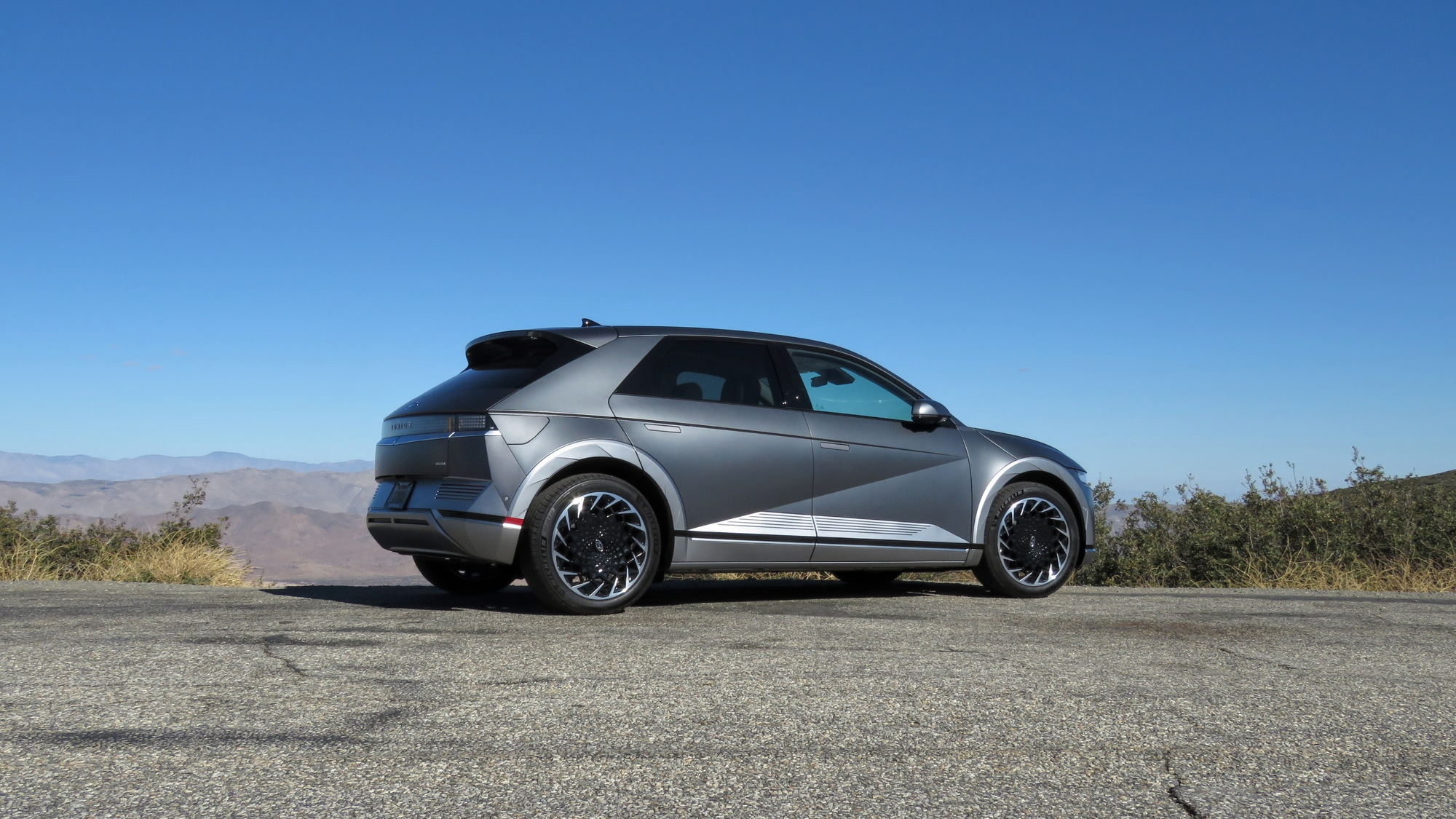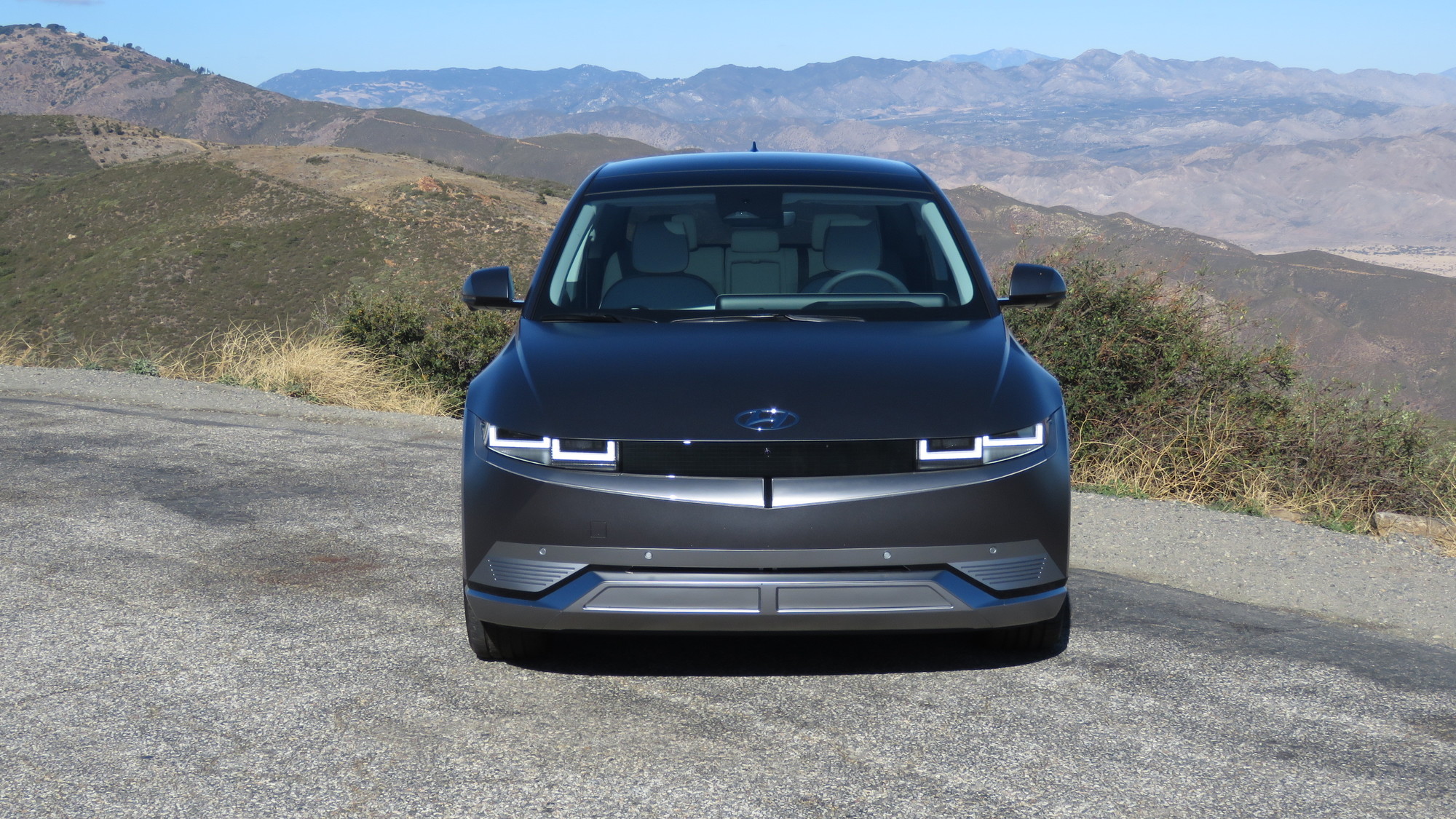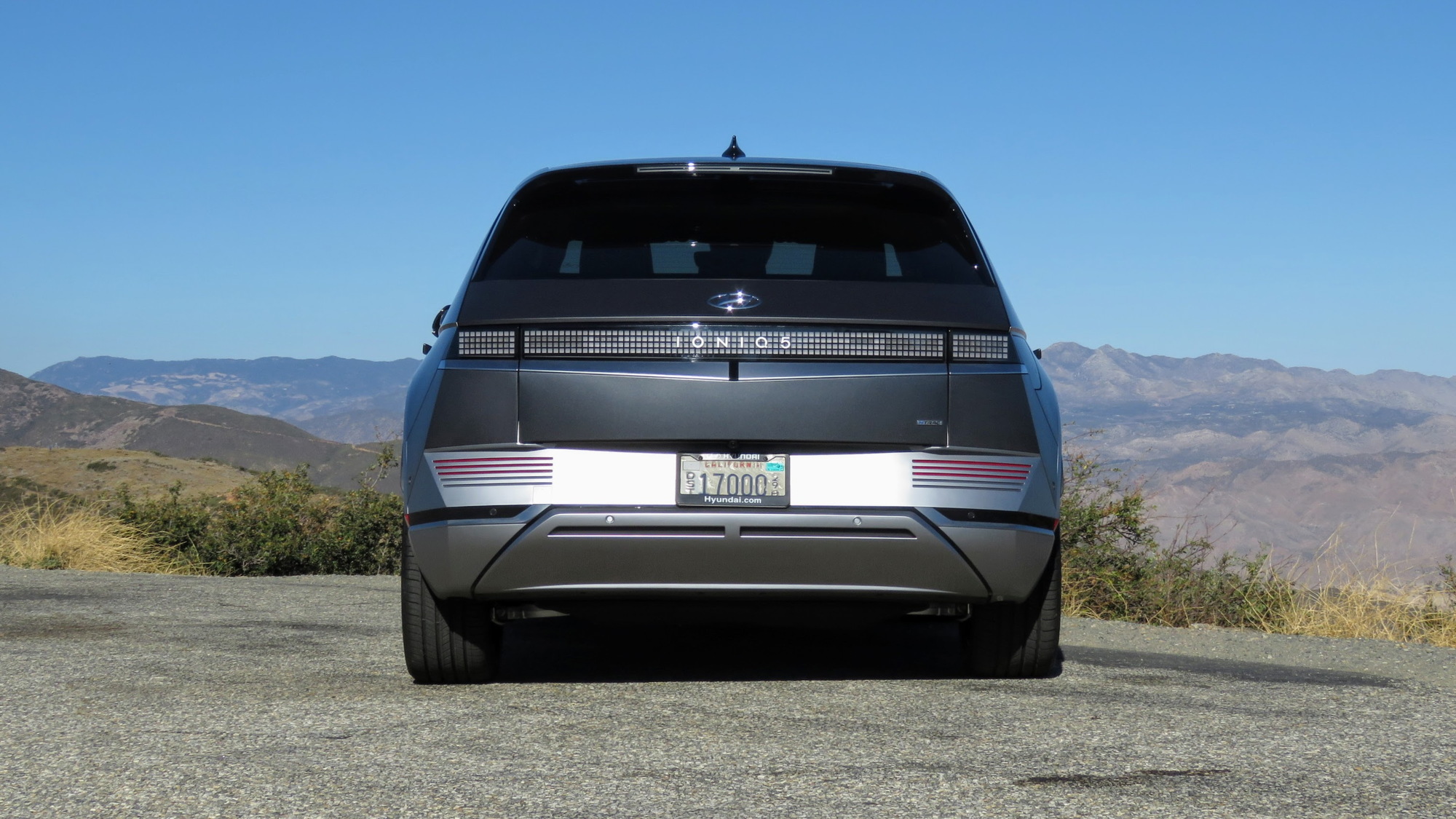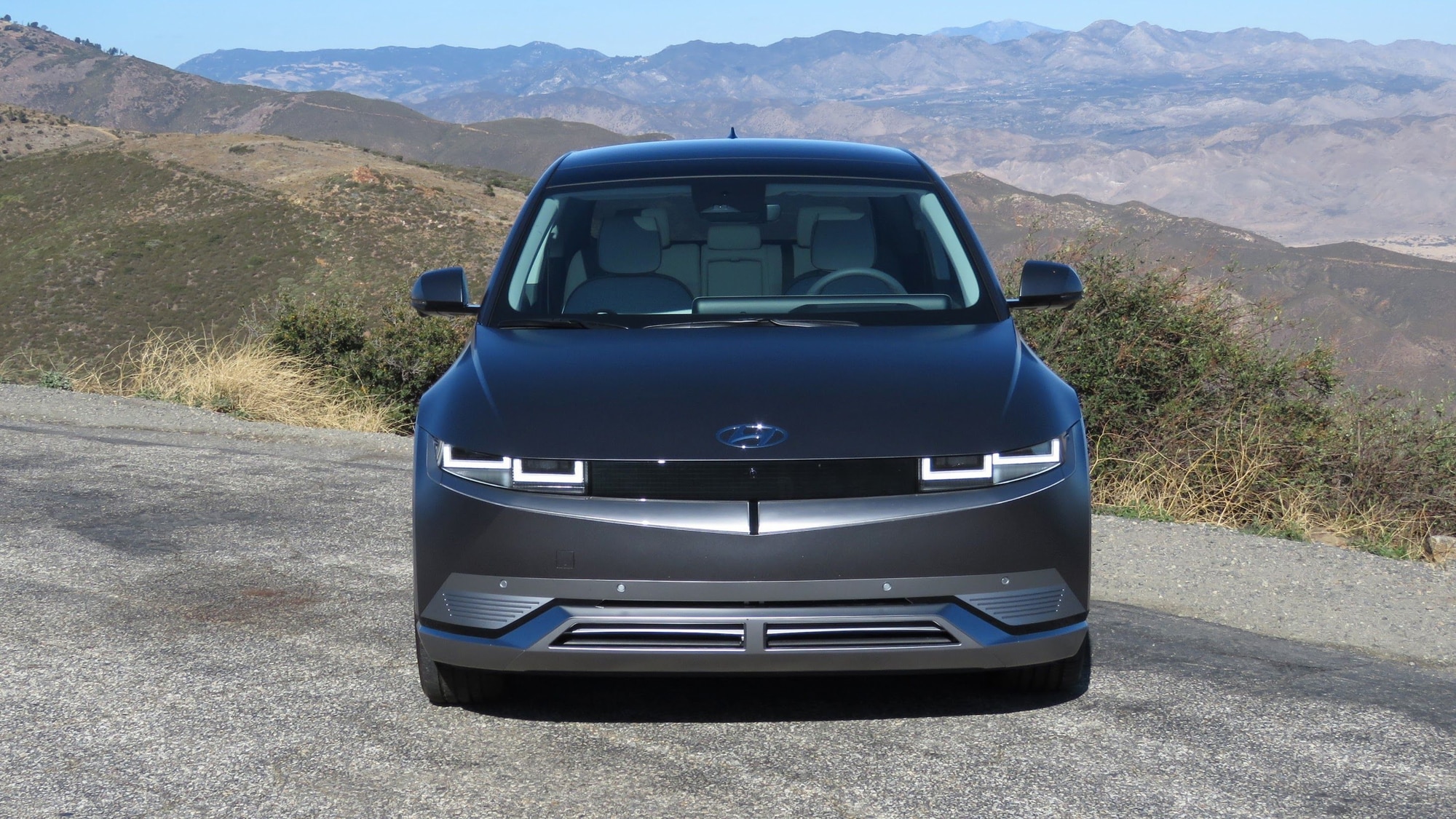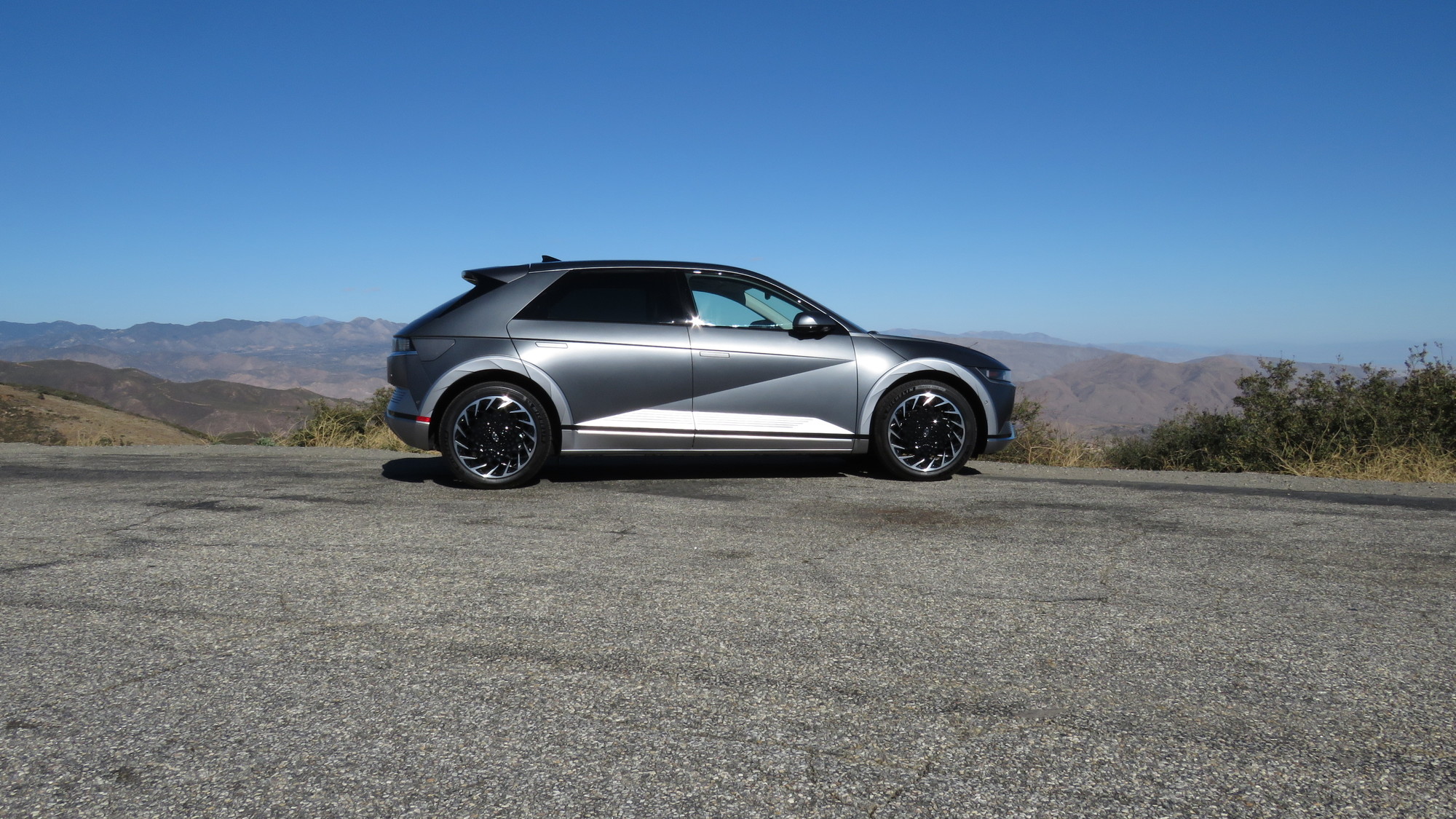The 2022 Hyundai Ioniq 5 looks different than all the rest, and from first sight it can tangle you up in a spot where nostalgia meets the future.
I’ll get back to that feeling. But thankfully, after several hours spent driving, charging, and crawling around the Ioniq 5 near San Diego last week, I can report that it’s one of the best-balanced EVs for driving attributes, packaging, and future-leaning technology—at an affordable price. It’s quieter than the Ford Mustang Mach-E and more dynamic than the VW ID.4, while feeling larger inside than the Tesla Model Y.
The Ioniq 5, like the 45 concept it’s based on, goes deep in its retro influences—paying homage to Hyundai’s original Giugiaro-penned Pony, which the U.S. never got.

2022 Hyundai Ioniq 5
Like an album from M83 simultaneously connects across decades to John Hughes movies, yet sounds fresh, I see Omnis and Horizons, Rabbits and Starlets, and sure, maybe a bit of DeLorean to nail the cultural references before focusing "Back to the Future," full speed and fully electric.
Fittingly, the Ioniq 5 is the launch platform for a new era at Hyundai—one of electric vehicles built on their own dedicated platform. Called E-GMP, it helps keep cabins large, floors flat, and cargo areas ample, all while using a battery pack design that it said is “the most power-dense system that Hyundai Motor Group has ever created.”
Dual-motor all-wheel-drive models make a combined 320 hp and 446 lb-ft of torque, while single-motor rear-wheel-drive models make 225 hp and 258 lb-ft. Official acceleration times, typically conservative from Hyundai, clock in at 5.1 seconds and 7.3 seconds, respectively.
The starting price of the 2022 Ioniq 5 will eventually be $40,925, yet I spent all of my drive time in a top-of-the-line Limited AWD model, starting at $55,725. Versus the single-motor version's EPA-rated 303 miles, it earns a 256-mile rating. But Hyundai suggested I might see better, also noting that figure represents the average of all-wheel-drive models—including the 20-inch wheels (the Limited) and the 19s that SE and SEL AWD versions get.

2022 Hyundai Ioniq 5
They weren't kidding. The Ioniq 5 gave an early indication that it’s an efficiency trendsetter. In my drive route, I covered 165 miles, starting and stopping at the same elevation and according to a weighted average from the trip meter averaging nearly 4.2 miles per kwh—actually better than the EPA ratings might indicate, and indicating 300 miles of range or more is possible for dual-motor models. I drove aggressively for 20 or 30 miles of the route, clicking through all the modes for the balance, and then on the way back blended in with traffic. The weather on the entire route was a mild 59 to 64 degrees F.
Although I didn’t get the chance to check the calibration of the odometer, even if it were off by 5% that would still be a fantastic result.
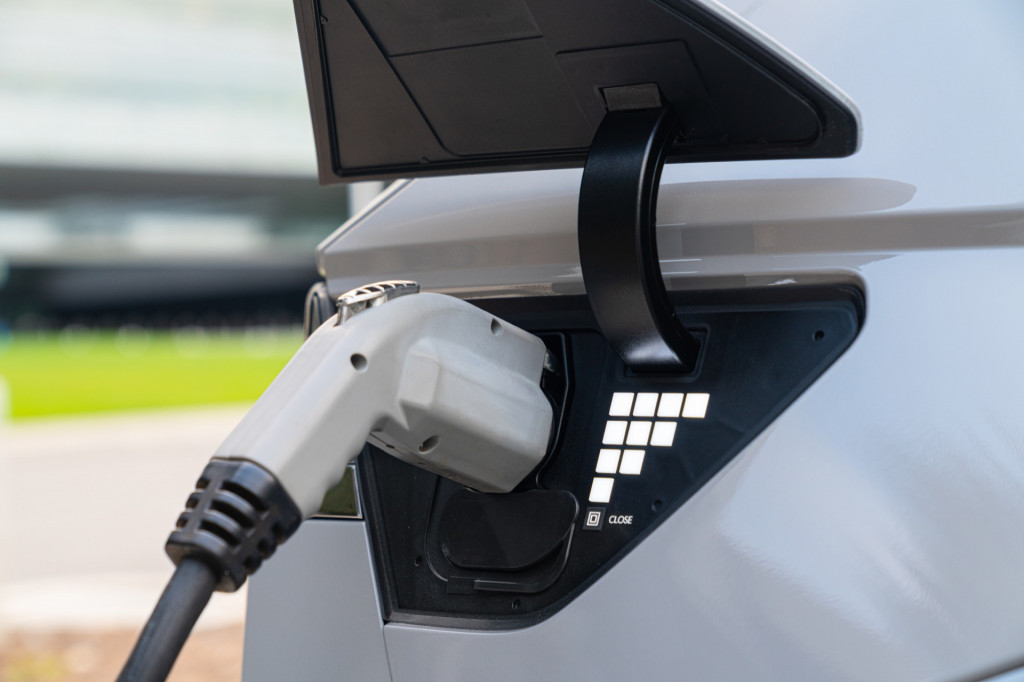
2022 Hyundai Ioniq 5
The Ioniq 5 promises a DC fast-charging time of as little as 18 minutes from 10% to 80%, and at a charging stop on 350-kw Electrify America hardware we saw rates that approached the reported maximum of around 245 kw. As for plugging in at home, the charge time on Level 2 is less than seven hours.
The Ioniq 5 offers four driving modes—Eco, Normal, Sport, and Snow—plus a coast mode and four regenerative braking modes. You can click through the regen modes with steering-wheel paddles, and the most aggressive one displays as “i-Pedal,” essentially a one-pedal mode bringing you to a gentle stop with a lift of the accelerator.
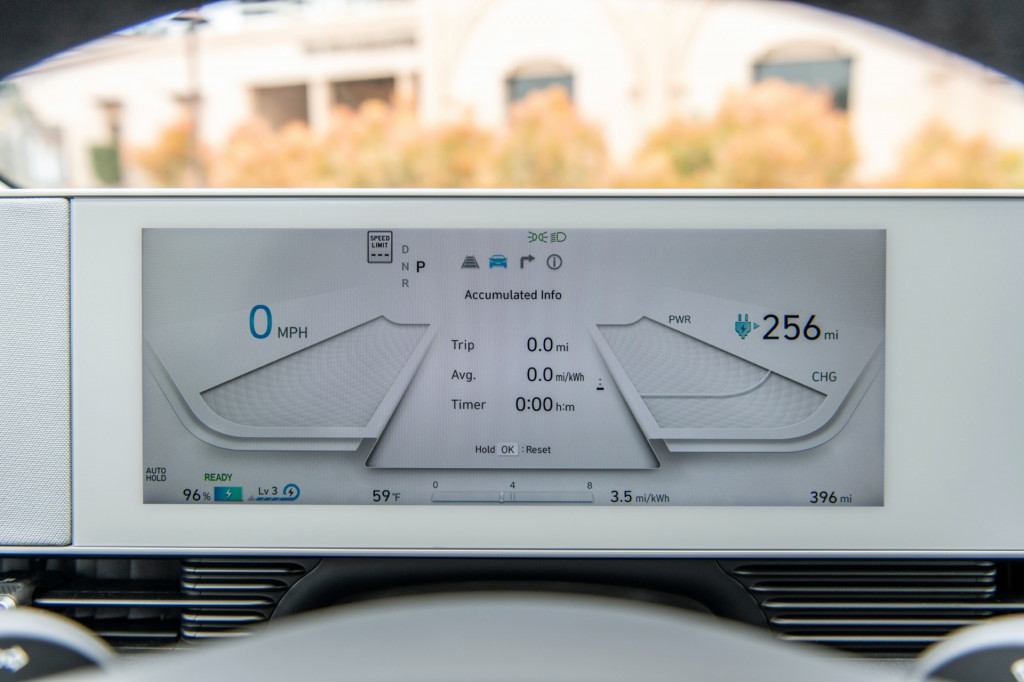
2022 Hyundai Ioniq 5
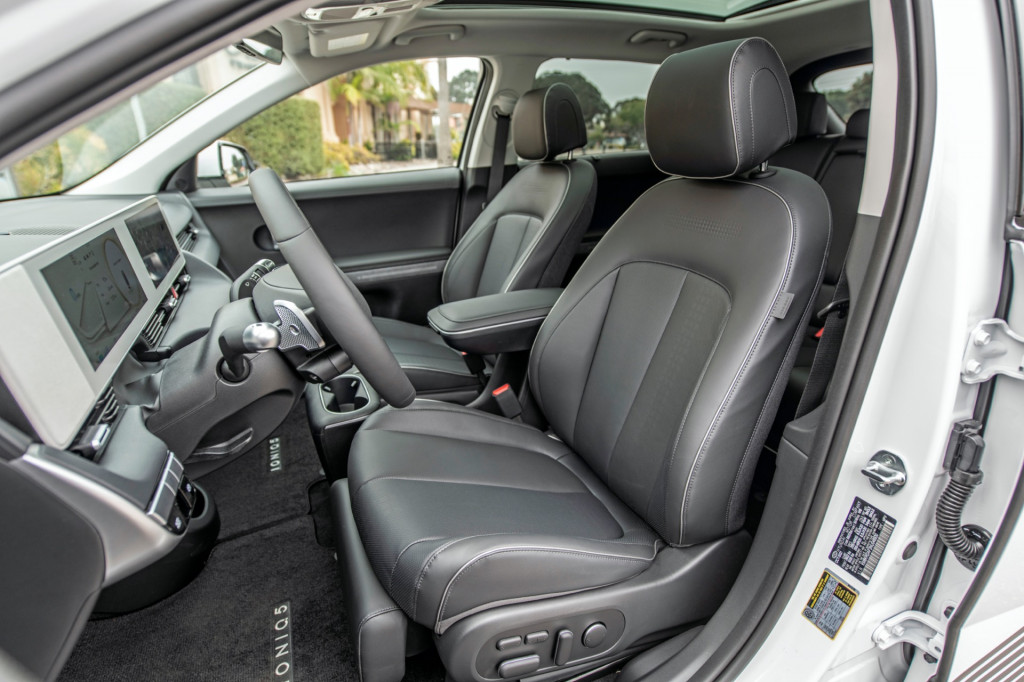
2022 Hyundai Ioniq 5

2022 Hyundai Ioniq 5
Dual-motor models also get a heat pump—not offered on rear-wheel-drive versions—and they employ a dog clutch that detaches the front motor to help maximize efficiency. It cuts out the front motor during all but launch in Eco mode, much of the time there’s a low load in Normal mode, and rarely in Sport mode. In Normal mode I could feel it transitioning the most, a very slight difference in the steering as I went around sweeping curves.
The Ioniq 5 rides on a front-strut, rear five-link layout, with four-wheel disc brakes (vented in front), and its suspension is calibrated for ride comfort over all-out handling. The car feels as if it has two personalities and is a bit out of sorts in between, when the road turns curvy and you're not committing to each apex. Drive it gently and there’s a fair amount of lean in tight corners, even some unsettling bounding upward over heaves—to be forgiven given our model’s nearly 4,700-lb curb weight. But if you click over to Sport and save the burst of power for right before a corner exit it can feel delightfully well-balanced, with the motor system seeming to play a part in keeping the body motion in check.
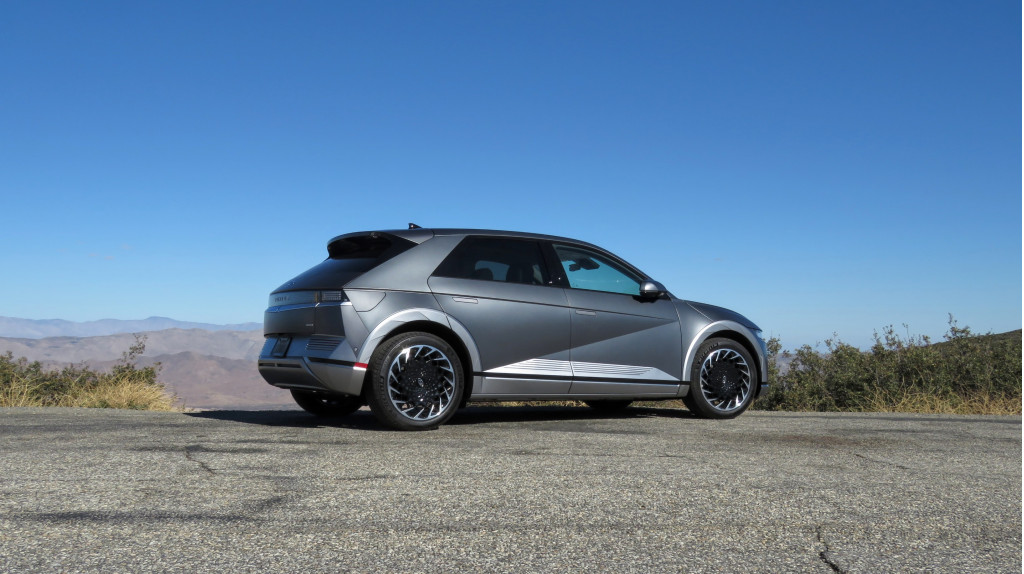
2022 Hyundai Ioniq 5
Steering is satisfying enough; it loads up nicely and off-center carries some feel of the road; the systems baked into the Ioniq 5 make it easier to access its handling capabilities than in the VW ID.4, for instance. But on-center the Ioniq 5 steering wheel can feel like a dead rudder as you follow the crown of the road or varying contours. We’re curious to see if we like the steering in single-motor versions better.
At initial launch, all U.S. versions of the Ioniq 5 will get the bigger battery pack—a 77.4-kwh pack with 384 SK Innovation pouch cells. But a base SE with a smaller 58-kwh pack and rear-wheel drive—weighing in closer to 4,000 lb—will arrive in spring 2022.
Thanks to a boost in energy density, the large pack weighs only 64 pounds more (about 1,060 pounds) than the Kona Electric’s pack, despite a much higher output and 20% more energy storage. Hyundai likewise notes that its access to a wide range of high-strength steels through its parent company allows advances in body strength and crashworthiness without adding weight.
Oil-cooled motors with hairpin stators and a silicon carbide inverter add to efficiencies, while a multi-charging system allows 400-volt DC fast charging in this 800-volt vehicle without extra equipment. The new platform also boasts bi-directional charging capability, and the first stage of that is a so-called Vehicle to Load feature. Limited models come with an integrated cabin outlet, while an outdoor V2L connector can be added as a $220 dealer accessory to any of the versions, including the more affordable SE and SEL. Either option allows you to power appliances or camping gear or to charge another EV at Level 1 rates.
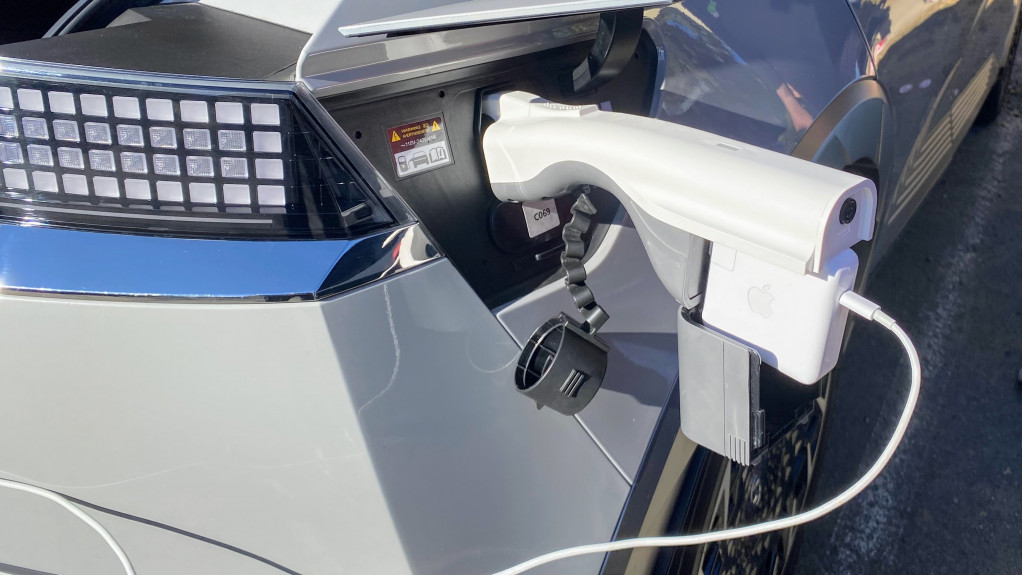
2022 Hyundai Ioniq 5 - V2L accessory
The Ioniq 5 feels a size larger inside. Hyundai tucked the climate control under the hood and pushed the dash far forward with the front floor open. That allowed space for the large sliding center console, with vanlike utility including multiple levels of storage and an armrest. The rear seats feel more ample for adults versus other compact crossovers, and they adjust fore and aft. Fold their seatbacks forward and you expand its 27.2 cubic feet of cargo space to 59.3 cubic feet. At 0.85 cubic feet, the frunk is just enough to fit a bag with the charging cord, or if you don’t travel with that, a small backpack.
Hyundai is calling the Ioniq 5 an “electric SUV,” but its ground clearance of 6.1 inches (less than some cars) and its EPA classification as a car (a Large Car) tells us otherwise—in all except its seating position (H-point), which feels too high relative to the rest of the design. The Ioniq 5 Limited, as we tested it, adds a “zero gravity” seat for the driver that reclines an extra bit and supports the lower leg. At 6-foot-6, I found lots of leg room but even in the seat’s lowest position it mashed me up toward the headliner. There’s space for the seat to adjust downward; it just doesn’t.
Drivers of all sizes may have an issue seeing the front corner of the car—one of the costs of fashion. The Limited model includes an excellent head-up display showing safety warnings and turn prompts in the field of vision.
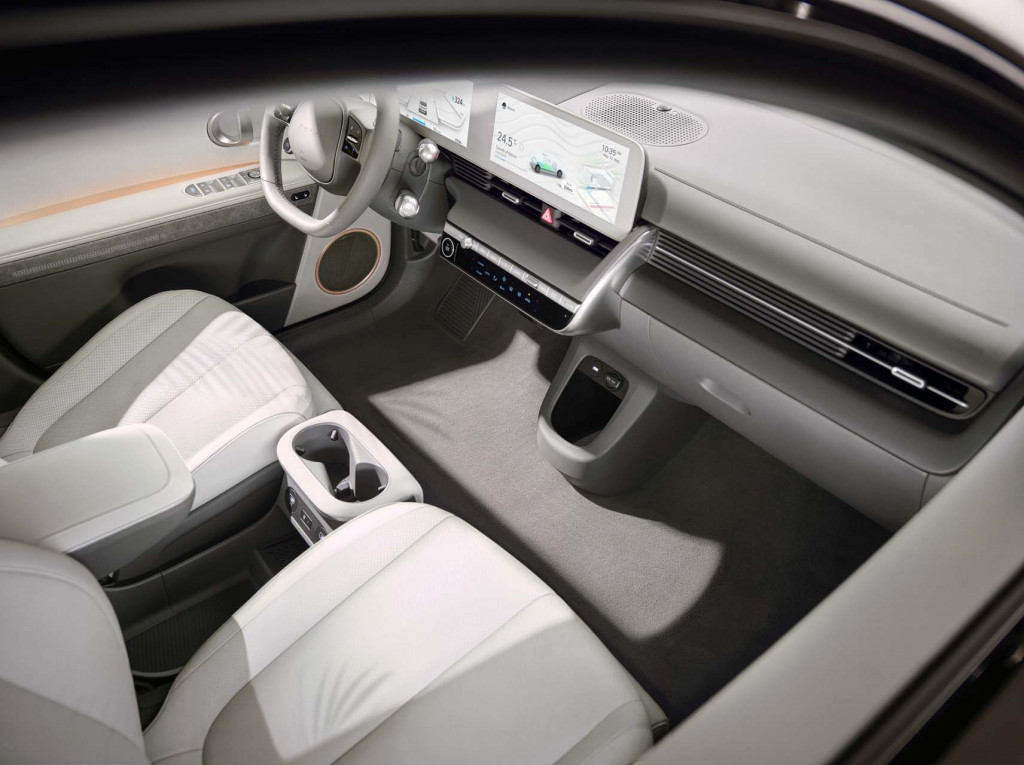
2022 Hyundai Ioniq 5
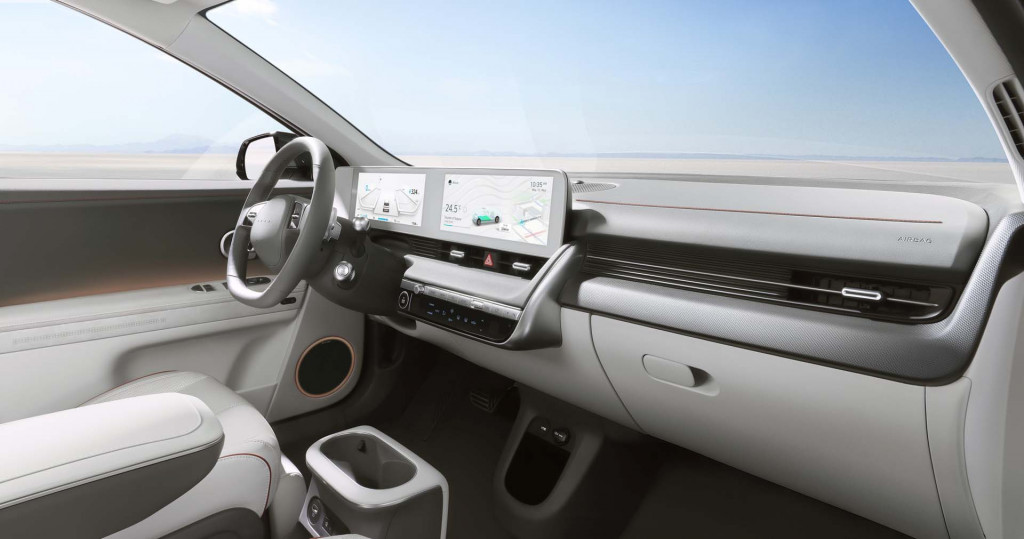
2022 Hyundai Ioniq 5
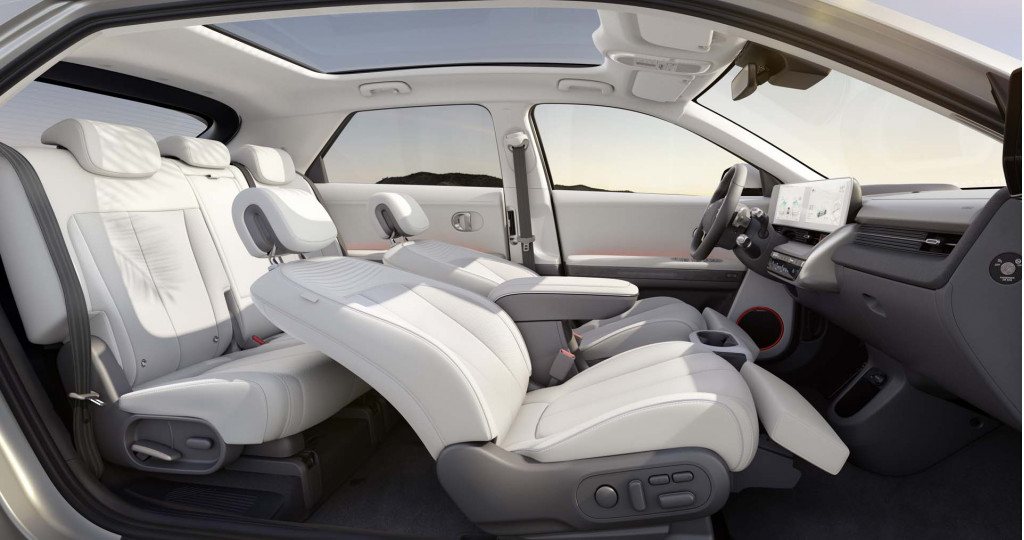
2022 Hyundai Ioniq 5
All models have the dual 12.3 screens, one which is used as an instrument cluster, the other which is a touchscreen for navigation, entertainment, and deeper settings. Below them are real mechanical buttons that click, and from those to the screen, it’s all crisp and responsive. SEL models add synthetic leather upholstery, a heated steering wheel, power-folding mirrors, and a hands-free power hatch, while Limited versions a sunroof, the head-up display, Bose premium audio, parking assistance, and a surround-view camera system with blind-spot monitors.
SEL and Limited versions get Highway Driving Assist 2, the latest version of the company’s driver-assistance system that allows lane changes in some conditions. The feature proved tricky to activate, as it requires the driver to operate the turn-signal stalk while also maintaining a good grip on the steering wheel that registers with the system, then letting go with the right timing.

2022 Hyundai Ioniq 5
Over-the-air updates can be applied to the infotainment system, which includes free updates for mapping, Hyundai says, and they can be applied to the vehicle’s systems. Oddly, the system doesn’t offer wireless Apple CarPlay or Android Auto—a glaring omission.
Top Limited versions offer a Hyundai Digital Key system that will unlock and start the car even where there isn’t data connectivity—for a limited number of times. Remote charging and climate preconditioning is accessed via a BlueLink app, and it’s compatible with Google voice commands.
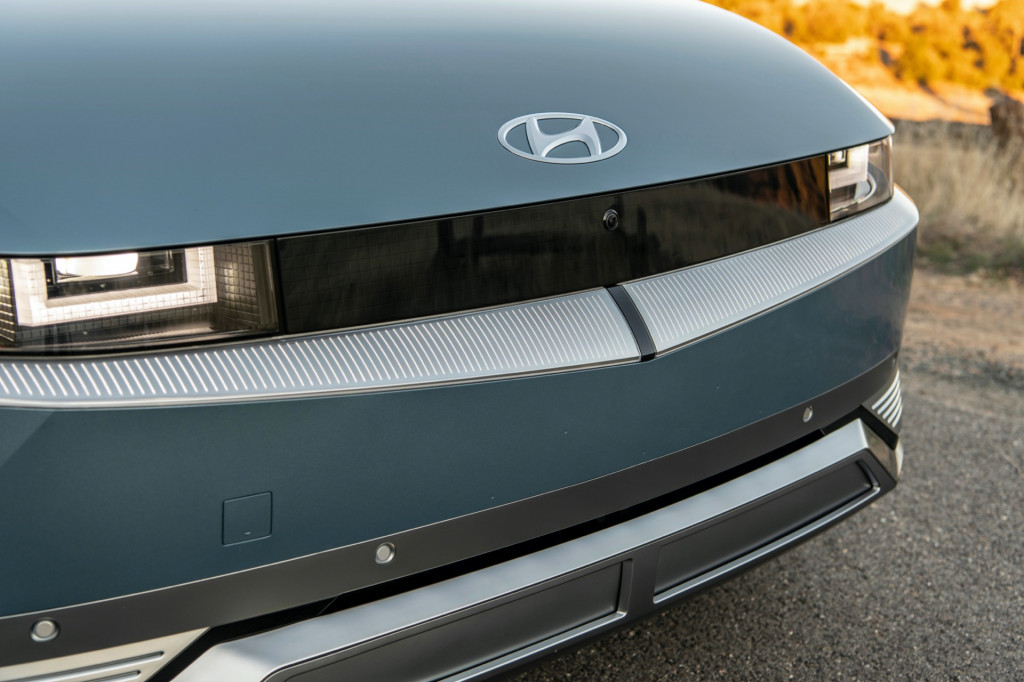
2022 Hyundai Ioniq 5

2022 Hyundai Ioniq 5
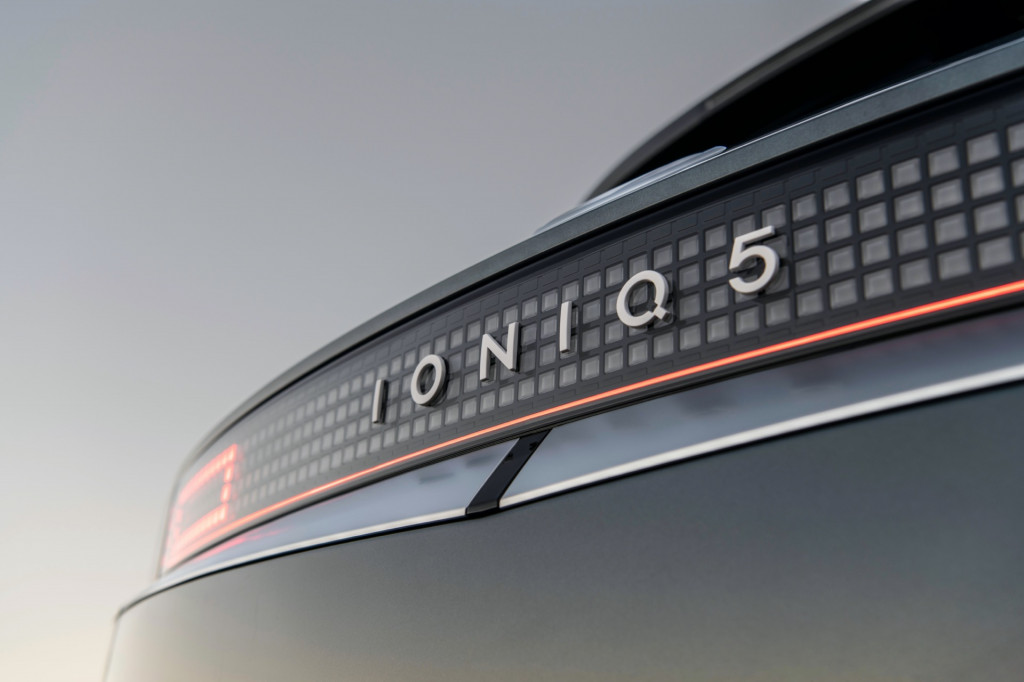
2022 Hyundai Ioniq 5
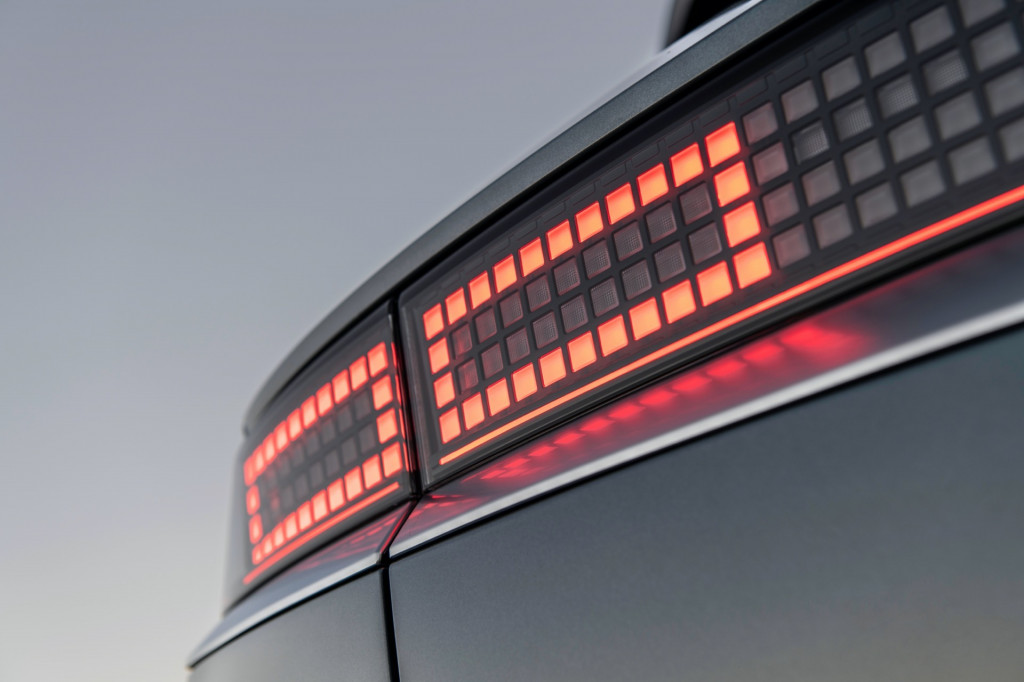
2022 Hyundai Ioniq 5
Now for the reality-check and moment of disappointment: Hyundai still won’t say that the Ioniq 5 is a 50-state vehicle. It says that it plans to sell the Ioniq 5 initially in California, Colorado, Connecticut, Maine, Maryland, Massachusetts, New Jersey, New York, Oregon, Rhode Island, and Vermont—all the ZEV states—plus Texas, Florida, Illinois, Pennsylvania, Arizona, Virginia, and Washington.
That amounts to an 18-state vehicle—unlike the related EV6, which Kia has said will be 50-state in its launch year. Hyundai said that there will be “a broader rollout” of the Ioniq 5 in 2022, but it wouldn’t provide any additional details to what that means. A high-ranking executive who’s no longer with the company told us approximately three years ago that Hyundai had been taking measures to assure that U.S. electric volume and availability wasn’t limited to a “compliance car” situation or limited states with any future entries.

2022 Hyundai Ioniq 5
That said, Hyundai has other EVs coming soon—like the Ioniq 6 sedan later next year, and an Ioniq 7 SUV due in 2024.
As important as the Ioniq 5 is; as great as it is to drive; and as near-flawless as it impressed me to be at first look, this is too good to miss. And we hope that customers with cash in hand—wherever they might be—don't miss out.
--
Hyundai provided some travel and accommodation to facilitate early vehicle access.
